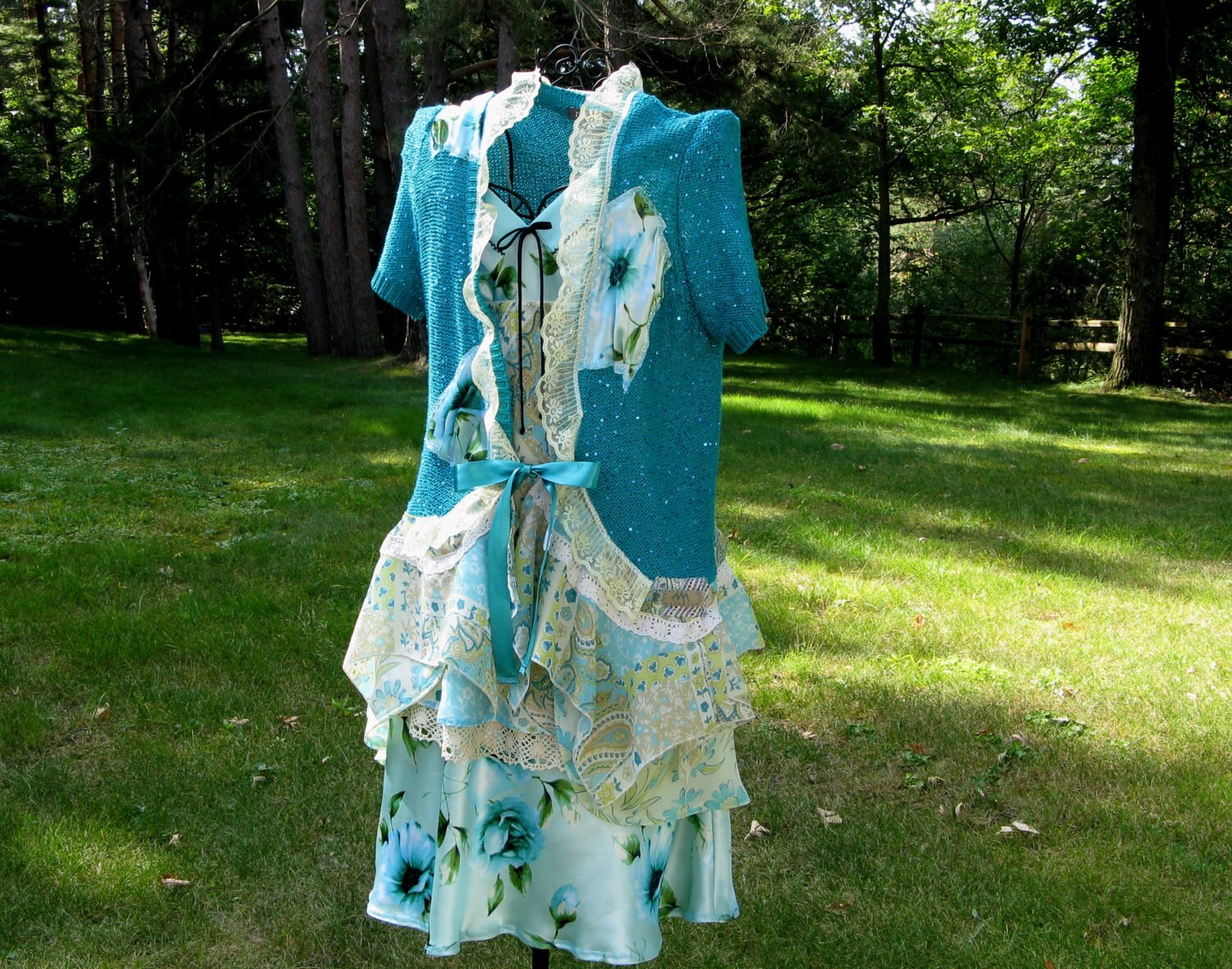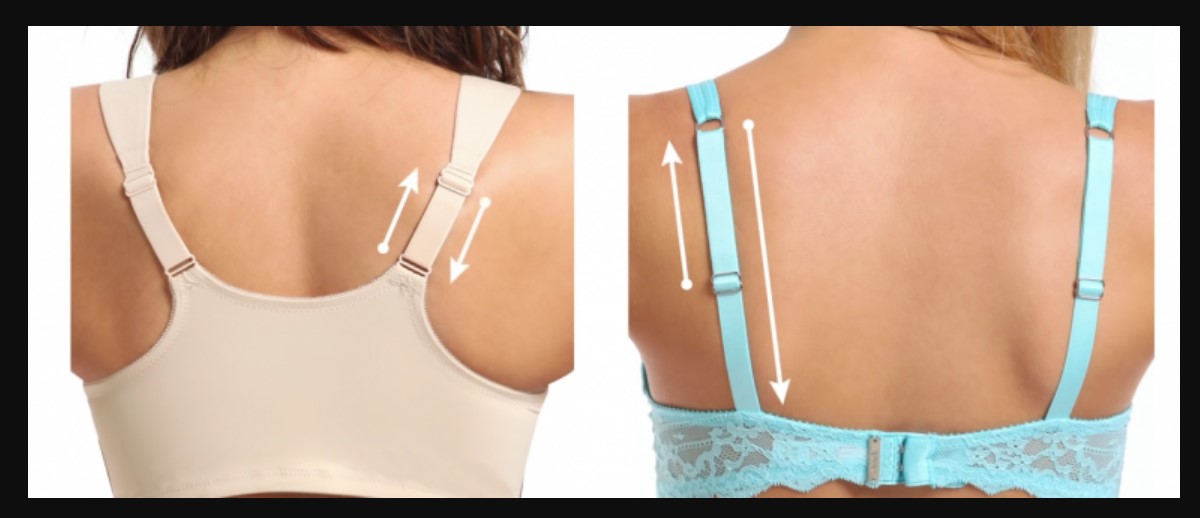Home>How-to Guides>For Women>How To Shorten A Slip Dress


For Women
How To Shorten A Slip Dress
Modified: July 30, 2023
Learn how to shorten a slip dress for women with these easy steps. Create a customized fit that flatters your body shape and style.
(Many of the links in this article redirect to a specific reviewed product. Your purchase of these products through affiliate links helps to generate commission for Under-tec.com, at no extra cost. Learn more)
Table of Contents
- Introduction
- Step 1: Gather the necessary materials
- Step 2: Determine the desired length
- Step 3: Prepare the slip dress for alteration
- Step 4: Pinning and marking the new hemline
- Step 5: Cut and remove excess fabric
- Step 6: Finish the new hem
- Step 7: Try on the shortened slip dress and make adjustments if needed
- Conclusion
Introduction
Welcome to our guide on how to shorten a slip dress! Slip dresses are incredibly versatile and trendy pieces of clothing that can be worn for various occasions. However, sometimes you may find that a slip dress you own is a bit too long for your liking. Instead of letting it languish in the back of your closet, why not give it a new lease on life by shortening it? Whether you want to transform a floor-length slip dress into a midi or simply take a few inches off the hemline, this step-by-step guide will walk you through the process.
Shortening a slip dress may seem like a daunting task, especially if you’re not an experienced seamstress. However, with a bit of patience and the right tools, you can easily achieve a professional-looking result. Not only will you be able to tailor the dress to your desired length, but you’ll also have a custom-made piece that fits you perfectly.
In the following steps, we will discuss the materials you’ll need, how to determine the desired length, preparing the dress for alteration, and the actual process of shortening the dress. We’ll also cover finishing touches and how to ensure the dress fits perfectly after alteration. So, let’s grab our sewing kit and get started on transforming your slip dress into the perfect length for you!
Step 1: Gather the necessary materials
Before you begin the process of shortening your slip dress, it’s essential to gather all the necessary materials. Having everything prepared and within reach will save you time and ensure a smooth alteration process. Here’s a list of items you’ll need:
- Slip dress: The dress you wish to shorten
- Measuring tape: For accurate measurements
- Pins: To hold the fabric in place during the alteration
- Seam ripper: In case you need to remove any stitches
- Fabric scissors: Sharp scissors designed for cutting fabric
- Thread: A matching or contrasting color to the dress
- Sewing machine or needle: Depending on your preference
- Sewing pins or clips: To hold the fabric in place while sewing
- Iron and ironing board: To press and flatten the fabric
Make sure your sewing machine is in good working condition, or if you prefer hand sewing, ensure you have a long, sharp needle suitable for the fabric of your slip dress. It’s also advisable to have a sewing kit on hand for any minor repairs or adjustments that may arise during the alteration process.
By having all of these materials readily available, you’ll be well-equipped to tackle the task of shortening your slip dress. Now that you’re prepared, let’s move on to the next step: determining the desired length of your dress.
Step 2: Determine the desired length
Now that you have all your materials ready, it’s time to determine the desired length of your slip dress. Think about the occasion or the look you want to achieve and consider how much shorter you want the dress to be. Here’s how you can go about it:
1. Try it on: Put on the slip dress and stand in front of a mirror. Assess how it currently fits and where you would like the new hemline to be. Mark the desired length with a pin or a small piece of removable fabric marker.
2. Consider proportions: Take into account your height, body shape, and personal style. A good rule of thumb is to aim for a length that accentuates your best features and flatters your figure. For a casual look, you might prefer a shorter hemline, while a slightly longer length would be more appropriate for formal events.
3. Look for inspiration: Browse fashion magazines, websites, or social media platforms for inspiration. Take note of slip dresses worn by fashion influencers or celebrities and see if any of their lengths resonate with your desired style.
Remember, it’s essential to maintain the balance and integrity of the dress when determining the desired length. Take note of any design elements that will be affected by the alteration, such as patterns or details at the hemline. Keep in mind that it’s always better to err on the side of caution and cut the dress slightly longer than intended, as you can always trim it further if needed.
Once you’ve decided on the new length, proceed to the next step: preparing the slip dress for alteration.
Step 3: Prepare the slip dress for alteration
Now that you’ve determined the desired length of your slip dress, it’s time to prepare it for the alteration process. This step will ensure that you have a clean and well-prepared canvas for your hemming work. Here’s what you need to do:
1. Wash and iron the dress: Before starting any alterations, it’s crucial to clean the slip dress according to the care instructions on the label. This will remove any dirt or wrinkles that could affect the accuracy of your measurements. Iron the dress to make sure it’s smooth and flat, which will make the rest of the process easier.
2. Turn the dress inside out: Flip the slip dress inside out so that the wrong side is facing you. This will expose the inner seams, making it easier to work on the hemline.
3. Remove any existing stitches: If your dress has a pre-existing hem, carefully remove the stitches using a seam ripper. This step is essential as it allows you to start with a clean edge, eliminating any unnecessary bulk or unevenness from the previous hemline.
4. Press the fabric: Take a hot iron and press along the bottom edge, about half an inch or so from the raw edge. This will create a crisp fold and serve as a guide for the new hemline.
5. Pin or baste the fold: Once you’ve pressed the fold, use pins or basting stitches to secure it in place temporarily. This will prevent the fabric from shifting during the alteration process and maintain the desired length.
By following these preparation steps, you’ll ensure that your slip dress is in the best condition for the alteration process. With the dress cleaned, ironed, and the fabric properly prepared, you’re now ready to move on to the next step: pinning and marking the new hemline.
Step 4: Pinning and marking the new hemline
With your slip dress prepped and ready, it’s time to start pinning and marking the new hemline. This step is crucial for ensuring an even and straight hem. Follow these steps to properly secure and mark the desired length:
1. Begin at one side: Start at one side seam of the slip dress, aligning the raw edge with the pressed fold you created in the previous step. Use sewing pins or clips to secure the fold in place.
2. Continue around the dress: Move along the bottom edge of the dress, pinning or clipping the fold at regular intervals. Be sure to maintain the same distance between the raw edge and the fold to ensure a consistent hemline.
3. Check for accuracy: Once you’ve gone around the entire dress, step back and check the pinned hemline in the mirror. Make any adjustments as necessary to ensure the hemline is even and falls at your desired length.
4. Mark the new hemline: Once you’re satisfied with the pinned hemline, use a fabric marker or tailor’s chalk to mark the new hemline. Make small dots or short lines along the fold at regular intervals. These markings will serve as your reference guide when cutting the excess fabric.
It’s important to take your time during this step to ensure accuracy. Double-check the symmetry and alignment of the pinned hemline before moving on to the next step. Once you’re confident in the markings, you’re ready to proceed to the actual cutting and removal of excess fabric.
Step 5: Cut and remove excess fabric
Now that you’ve marked the new hemline on your slip dress, it’s time to cut and remove the excess fabric. This step will bring you one step closer to achieving the desired length. Here’s how to proceed:
1. Double-check the markings: Before making any cuts, carefully examine the marked hemline to ensure that it aligns with your desired length. Make any necessary adjustments or corrections if needed.
2. Use sharp fabric scissors: Grab a pair of sharp fabric scissors and position them at the marked hemline. Slowly and accurately cut along the line, removing the excess fabric. Take your time and maintain a steady hand to ensure a clean cut.
3. Trim the lining (if applicable): If your slip dress has a lining, make sure to trim it as well, using the same process as the outer fabric. This will keep the lining and dress proportionate.
4. Check the length: Once you’ve cut the fabric, try on the slip dress to check the length. Stand in front of a mirror and see if it falls at the desired level. If it’s too long, you can always go back and trim a little more. However, make sure not to make it too short, as you can’t add fabric back.
5. Finish the edges (optional): Depending on the type of fabric and the desired look, you may choose to finish the raw edges of the new hemline. You can use a serger, a zigzag stitch on a sewing machine, or even a simple rolled hem if you’re confident in your sewing skills. This step will prevent fraying and give the hemline a polished finish.
By carefully cutting and removing the excess fabric, you’re bringing your slip dress closer to its new and improved length. Now, it’s time to move on to the next step: finishing the new hem to ensure durability and a professional look.
Step 6: Finish the new hem
Now that you have successfully cut and removed the excess fabric from your slip dress, it’s time to finish the new hem. This step is crucial for not only ensuring the durability of the hemline but also giving it a professional and polished look. Follow these steps to finish the new hem:
1. Press the hem: Using an iron set to the appropriate heat setting for your fabric, press the new hemline to create a crisp fold. Start from one end and work your way around the dress, applying even pressure to ensure the fold stays in place.
2. Pin or baste the hem: After pressing the hem, use sewing pins or basting stitches to hold it in place. This step will keep the fold secure while you sew the new hemline.
3. Choose your sewing method: Depending on your sewing skills and equipment, you can either hand sew or use a sewing machine to finish the new hem. If hand sewing, choose a small, neat stitch that securely holds the folded fabric. If using a sewing machine, select a stitch that complements your fabric and ensures a strong hemline.
4. Sew the hemline: Begin sewing from an inconspicuous spot, such as a side seam, to ensure a seamless finish. Follow the pinned or basted hemline, removing each pin or basting stitch as you sew. Take your time and sew carefully, keeping the stitch line parallel to the folded edge.
5. Backstitch and finish: Once you’ve sewn all the way around the hemline, backstitch a few stitches to secure the thread. Trim any excess thread and give the finished hemline a final press with the iron to set the stitches and give it a polished appearance.
Finishing the new hemline will ensure that it remains secure and withstands normal wear and tear. It also adds a professional touch to your slip dress alteration. With the hem completed, you’re one step away from enjoying your newly shortened slip dress. Let’s move on to the final step: trying on the dress and making any necessary adjustments.
Step 7: Try on the shortened slip dress and make adjustments if needed
Congratulations on reaching the final step of shortening your slip dress! Now that you’ve completed the alteration, it’s time to try on the dress and make any necessary adjustments to ensure the perfect fit. Here’s what to do:
1. Put on the dress: Slip into your newly altered dress and stand in front of a mirror. Take note of how the dress falls on your body and if the length is to your liking.
2. Assess the fit and length: Pay attention to how the slip dress fits and moves as you walk and move your arms. Make sure the hemline is at the desired length and that it flatters your figure.
3. Make adjustments if needed: If you find that the dress is still too long or too short, you can go back and make further alterations. Use pins or fabric markers to mark the new length, and repeat the process of cutting and finishing the hemline as before.
4. Check for any minor repairs: While trying on the dress, also look for any loose threads, seams that might need reinforcement, or any other minor repairs that might need to be addressed. Take the time to fix these issues to ensure the longevity of your slip dress.
Remember, it’s important to take your time during this step to ensure the dress fits you perfectly. Don’t rush the process, as making small adjustments will greatly enhance your overall satisfaction with the final result.
Once you’ve tried on the dress and made any necessary adjustments, you are now ready to confidently wear and enjoy your newly shortened slip dress. With your newfound knowledge and skills, you have the ability to transform any slip dress into a customized piece that fits you beautifully. So go ahead, rock that new length with confidence and style!
Conclusion
Shortening a slip dress may initially seem like a challenging task, but with the right tools, techniques, and a bit of patience, you can achieve fantastic results. The step-by-step guide we’ve provided has walked you through the process, from gathering the necessary materials to trying on the finished dress. By following these steps, you can transform a too-long slip dress into a piece that fits you perfectly and reflects your personal style.
Remember, preparation is key. Taking the time to gather the necessary materials, determine the desired length, and prepare the dress for alteration will ensure a smooth and successful process. Pinning and marking the new hemline accurately, cutting and removing excess fabric with precision, and finishing the new hemline will contribute to the overall professional look of your altered slip dress.
After completing these steps, it’s important to try on the dress and make any necessary adjustments. Taking the time to evaluate the fit, length, and overall appearance will allow you to fine-tune the alterations and ensure that the slip dress is perfect for you.
By embracing the art of altering and customizing your clothing, you not only save money but also gain the ability to create unique and personalized pieces that enhance your wardrobe. So, don’t be afraid to unleash your creativity and experiment with different alterations and techniques. With each alteration, you’ll gain more confidence and skill.
Now that you have the knowledge and understanding of how to shorten a slip dress, you have the power to transform not only this garment but future ones as well. So, grab your sewing kit, gather your materials, and let your inner fashionista shine as you create the perfect length and fit for your slip dresses!










